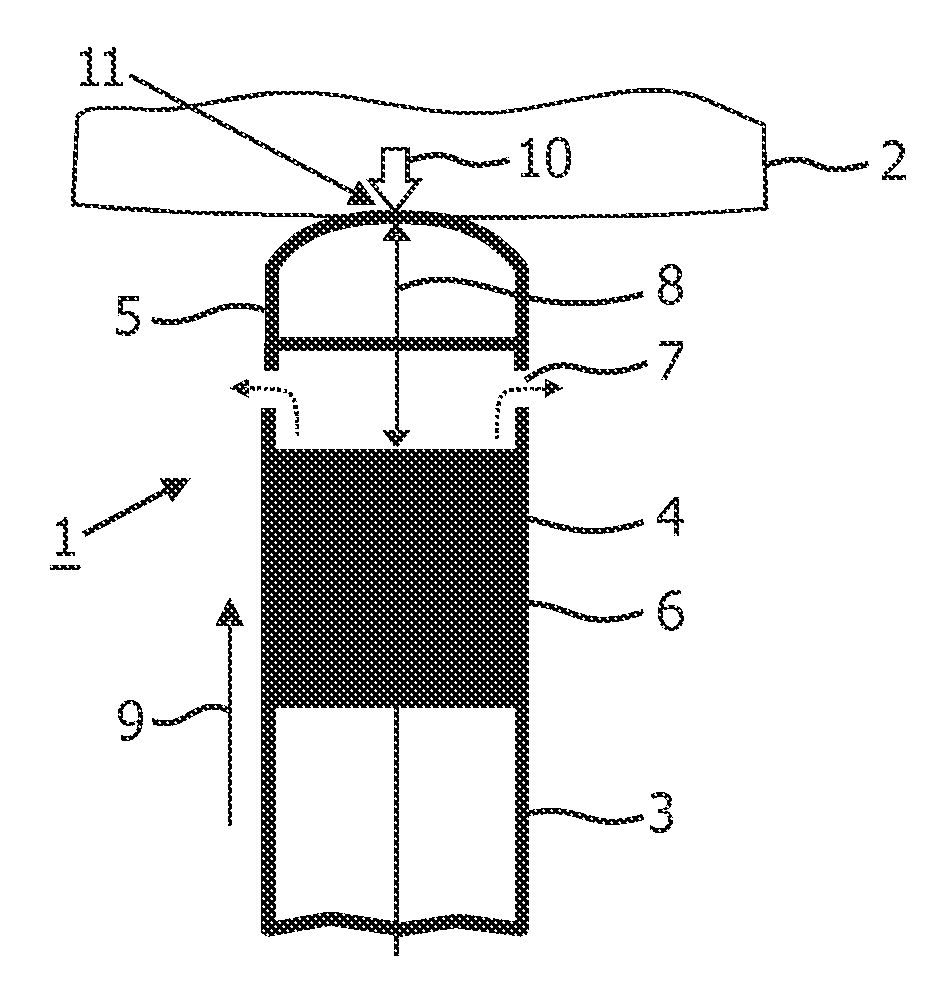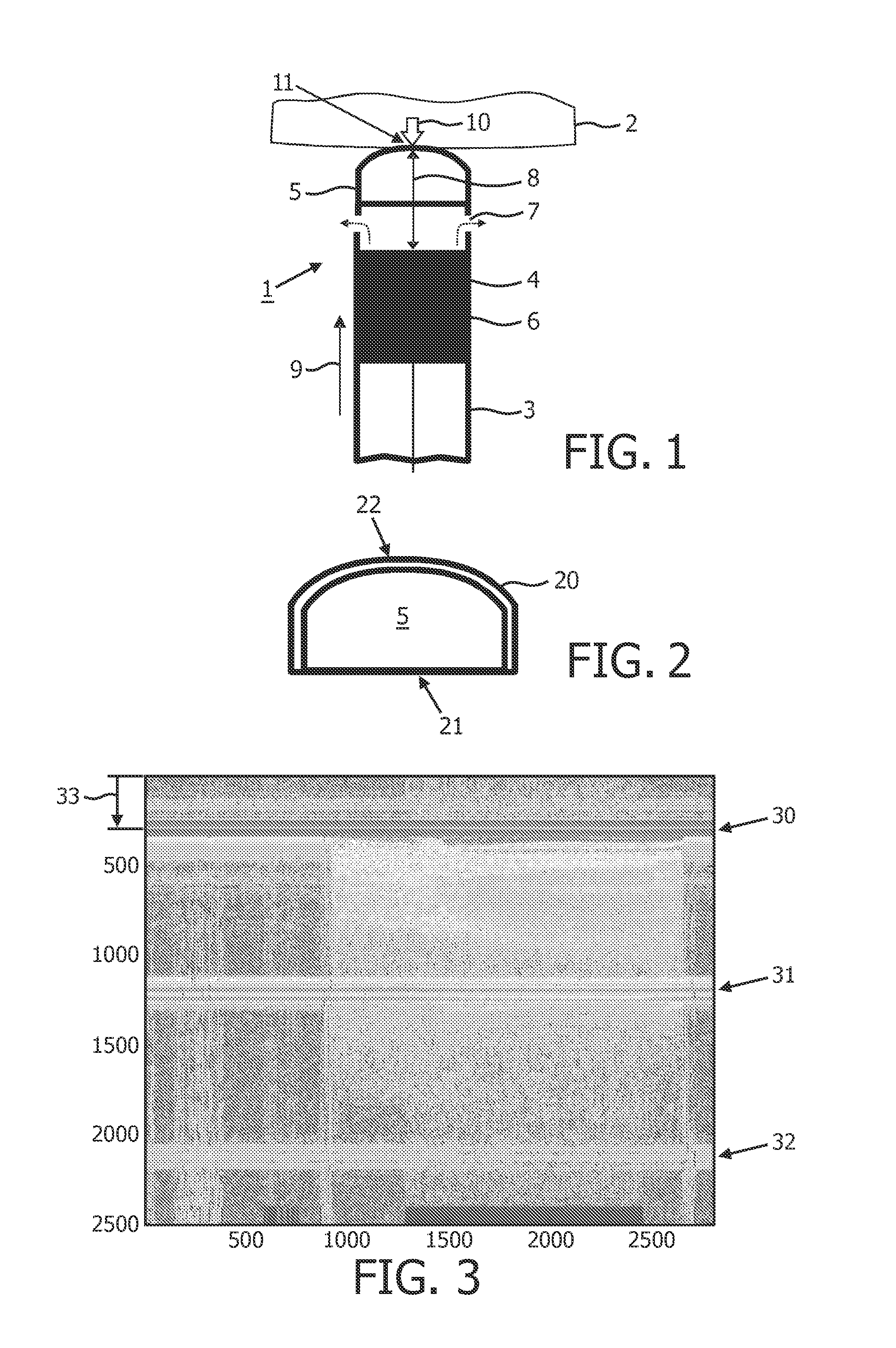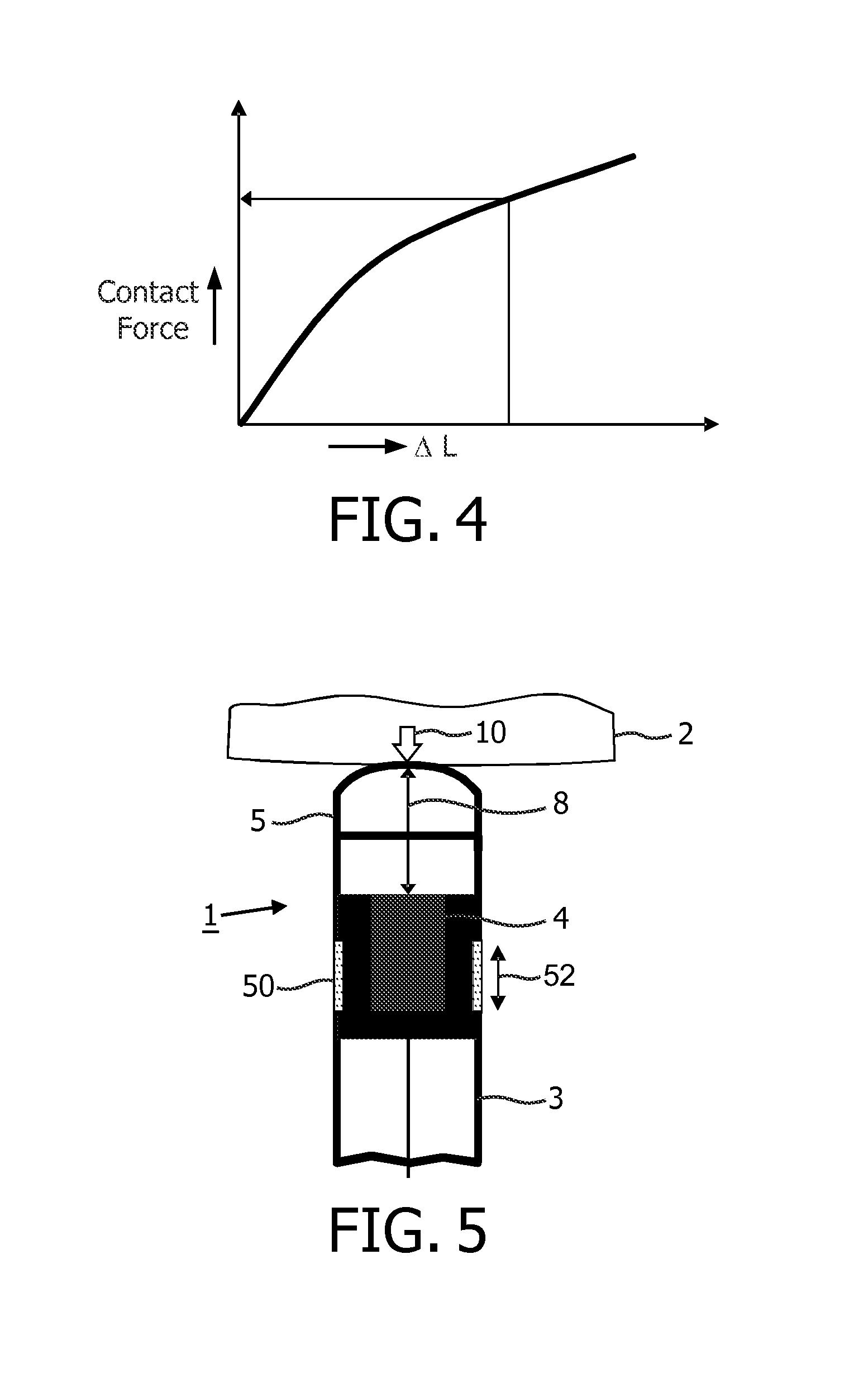Medical ultrasound device with force detection
- Summary
- Abstract
- Description
- Claims
- Application Information
AI Technical Summary
Benefits of technology
Problems solved by technology
Method used
Image
Examples
Embodiment Construction
[0042]The present invention is disclosed in connection with a RF ablation catheter comprising a monitoring system in accordance with embodiments of the present invention. It is however to be understood that, while such an application is advantageous, the invention is not limited to this. In fact, the medical device may be applied in connection with any device which uses ultrasound transducers and which supports a structural configuration which enables that an acoustic path length between a transmission element and the ultrasound transducer varies with contact force imposed to the distal end region.
[0043]FIG. 1 schematically illustrates the distal end region 1 of an ablation catheter-based probe, hereafter simply referred to as a catheter, abutting an object 2, such as tissue in the form of a cardiac wall. The catheter comprises an elongated body 3, a distal end region 1 and a proximal end (not shown). A length axis 9 runs along the elongation of the elongated body. The distal end re...
PUM
 Login to View More
Login to View More Abstract
Description
Claims
Application Information
 Login to View More
Login to View More - R&D
- Intellectual Property
- Life Sciences
- Materials
- Tech Scout
- Unparalleled Data Quality
- Higher Quality Content
- 60% Fewer Hallucinations
Browse by: Latest US Patents, China's latest patents, Technical Efficacy Thesaurus, Application Domain, Technology Topic, Popular Technical Reports.
© 2025 PatSnap. All rights reserved.Legal|Privacy policy|Modern Slavery Act Transparency Statement|Sitemap|About US| Contact US: help@patsnap.com



